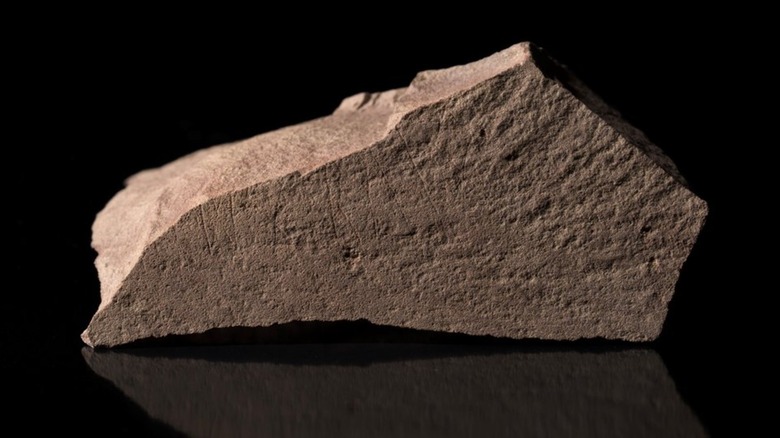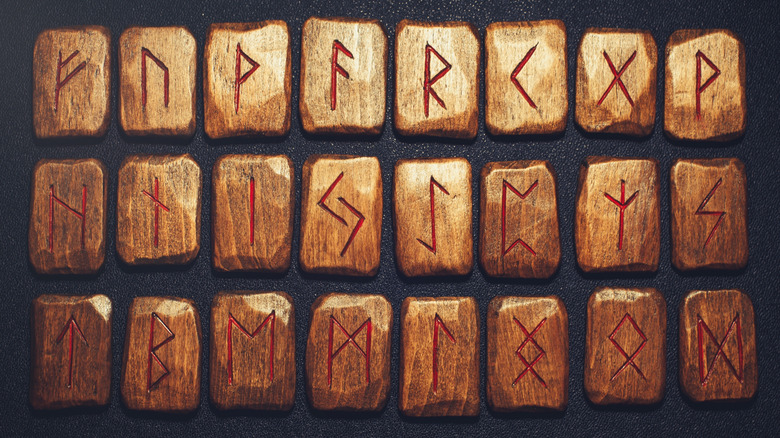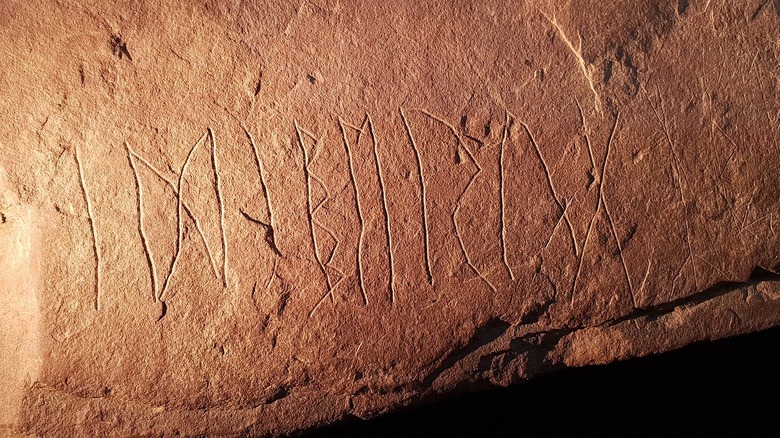This Is The Oldest Runestone Scientists Ever Discovered
The Viking Age left an indelible mark on Scandinavia, influencing national borders, shaping a seafaring culture, and birthing legends that remain influential to this day. It also left a material mark on the landscape in the form of runestones, engraved rocks scattered across northern Europe in the thousands, primarily on the Scandinavian Peninsula. They are typically raised off the ground, standing as lone monoliths pointing towards the heavens. Collectively, these stones represent the ultimate chronicle of the old Norse world as remembered by the ones who lived it.
Runestones are storytellers. Their engravings often tell of fallen warriors and adventurers who took part in Viking voyages and raids, recounting their lives and fates. They were placed on prominent points such as hilltops and roadsides in order to spread the word to all who might pass by. Sometimes, runestones were placed along property borders to make known whose land one trod upon. From studying these chronicles, we can learn about pivotal events in Nordic history, but also the love that people held for their deceased, and the value they placed on memories.
Runestones are engraved with a variety of symbols. Some are illustrations, painted engravings of religious figures and mythic beasts, but they are largely composed of the namesake runes, letters of an ancient alphabet that has slowly evolved over time. It's always been known that runes are ancient, but until a few years ago, we had no idea just how far they went back.
Runestones could be almost 1,000 years older than the Vikings
The Viking Age, with which runestones are associated, lasted from the ninth to 11th centuries, but it turns out that their runes could date back as much as a thousand years earlier. In 2021, a team of archaeologists excavating a grave field in the town of Hole in Eastern Norway made an astounding discovery. They uncovered several fragments of etched sandstone spread across multiple different graves that, when pieced together, form a single runestone, now named the Svingerud Stone. Radiometric dating places the Svingerud Stone's origin between 50 B.C. and A.D. 275, making it the oldest runestone discovered to date. It is as much as 10 centuries older than the famous Jelling Stone erected by the Danish king Harold Bluetooth to commemorate his parents in the late-900s, an event that is widely seen as initiating the runestone craze within Viking society.
The Svingerud Stone breaks with some of the key characteristics associated with Viking-era runestones. Notably, the Svingerud Stone was found in a set of graves, whereas Viking runestones, despite frequently commemorating deceased people, were not erected at grave sites. Stranger still, a 2025 study published in the journal Antiquity presents evidence that the Svingerud Stone was fractured on purpose to divide amongst three graves, though it isn't clear why. Clues could be hiding in the runic inscription itself, but the Svingerud Stone has proven to be a rather tough nut to crack.
The Svingerud Stone is in a very ancient language
Runes are the letters used by ancient Germanic languages from which the modern languages of Scandinavia ultimately evolved. There is a great deal of debate over the origins of the runic alphabet, but many believe it evolved from the Etruscan alphabet, and that it was influenced by both Latin, which made the base of the English alphabet, and Greek, which maintains a major presence in academia, such as the use of delta (∆) in math. Due to its close ties to familiar European alphabets, scholars are able to translate the runic alphabet quite reliably, but the Svingerud Stone is an especially tricky case.
The runic alphabet is also known as the futhark, named for the sounds made by its first six letters. Just like the Latin alphabet and others, the futhark evolved over time, remaining in use all the way up until the 14th century. Most runestones were created during the Viking Age, which lasted from approximately A.D. 800–1050. They were written in Younger Futhark, a version of the language written with 16 runes (letters). However, the Svingerud Stone is written in a much older version of the language, called Elder Futhark, which had 24 runes. Based on the age of this particular runestone, it could be one of the first uses of the futhark ever.
So, what does the Svingerud Stone say?
Deciphering the text of the Svingerud Stone has proven extremely difficult for two main reasons. The first is that, while scholars are confident that they have accurately translated the entire Younger Futhark alphabet, the eight additional runes found in Elder Futhark are not confidently understood. Making matters worse is the fact that the Svingerud Stone was fractured and subsequently buried for as long as a millennium, causing many parts of the engraving to degrade. Nevertheless, researchers have pieced together a few small clues as to the runestone's purpose.
One word stands out on the main fragment of the stone: ᛁᛞᛁᛒᛖᚱᚢᚷ. Translated to the Latin alphabet, it reads, "idiberug". Based on the tradition of making runestones to honor the dead, researchers believe that the stone may have been carved in memory of someone with the familial name Idiberung, or it might mean "for Idibira," likely a woman's name. Another fragment bears what seems to be the signature of the Svingerud Stone's engraver. Translated to the Latin alphabet, the words read "runo" and "fahido," which meant "rune" and "wrote" followed by a name that is almost entirely degraded save for an apparent letter "u" at the end. Going by naming conventions of the era, the engraver was likely a woman as well, but her relationship to the mysterious "idiberug" may never be known.



